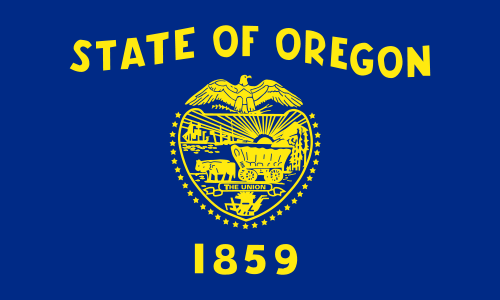Oregon Measure 34, State Forest Conservation and Timber Production Plan Initiative (2004)
| Oregon Measure 34 | |
|---|---|
| Election date |
|
| Topic Environment |
|
| Status |
|
| Type Initiated state statute |
Origin |
Oregon Measure 34 was on the ballot as an initiated state statute in Oregon on November 2, 2004. It was defeated.
A "yes" vote supported this ballot initiative to:
|
A "no" vote opposed this ballot initiative, thus continuing to require the state government to manage state forests to maximize their permanent value as defined by the Board of Forestry. |
Election results
|
Oregon Measure 34 |
||||
|---|---|---|---|---|
| Result | Votes | Percentage | ||
| Yes | 659,467 | 29.10% | ||
| 1,606,496 | 70.90% | |||
Text of measure
Ballot title
The ballot title for Measure 34 was as follows:
| “ | REQUIRES BALANCING TIMBER PRODUCTION, RESOURCE CONSERVATION/PRESERVATION IN MANAGING STATE FORESTS; SPECIFICALLY ADDRESSES TWO FORESTS RESULT OF “YES” VOTE: “Yes” vote requires managing state forests balancing, as equally beneficial, conservation/preservation and timber production; manages Tillamook, Clatsop forests half for restoration, half for production. RESULT OF “NO” VOTE: “No” vote retains current law allowing mixed use state forest management; rejects: requiring management that values conservation and production equally, separately managing Tiljamook, Clatsop Forests. SUMMARY: Current law directs that Board of Forestry manage all state forests to maximize “permanent value" (defined by board) through mixed use, including timber sales, mining, protecting, conserving, utilizing forests. Measure requires management defining “ permanent value” as balancing sustainable timber production with water, wildlife, watershed protection, recreation, forest restoration, considering resource conservation equally beneficial to timber production. Manages Tillamook, Clatsop Forests half for forest restoration, prioritizing drinking water, habitat, fish protection; half for sustainable timber production, with restoration management steps recommended by restoration science team. Addresses using timber revenues for common School Fund, forest restoration management (board providing additional funding as needed); continues current local school funding levels. Measure declares it replaces any other management plan for Clatsop, Tillamook Forests adopted in 2004 election. Other provisions. ESTIMATE OF FINANCIAL IMPACT: With respect to the Tillamook and Clatsop State Forests: The measure is estimated to increase state expenditures by $1.5 million to $6.3 million per year; The measure is estimated to decrease state revenue by $4.2 million to $10.3 million per year; The measure is estimated to require approximately $2 million of one-time state expenditures; The measure is estimated to decrease revenues for local governments by $17.2 million to $19.4 million per year; and There is no financial effect on local government expenditures. The impact of the measure on other state forests cannot be determined. | ” |
Full Text
The full text of this measure is available here.
Path to the ballot
An initiated state statute is a citizen-initiated ballot measure that amends state statute. There are 21 states that allow citizens to initiate state statutes, including 14 that provide for direct initiatives and nine (9) that provide for indirect initiatives (two provide for both). An indirect initiated state statute goes to the legislature after a successful signature drive. The legislatures in these states have the option of approving the initiative itself, rather than the initiative appearing on the ballot.
In Oregon, the number of signatures required for an initiated state statute is equal to 6% of the votes cast in the last gubernatorial election. A simple majority vote is required for voter approval.
See also
External links
Footnotes
State of Oregon Salem (capital) | |
|---|---|
| Elections |
What's on my ballot? | Elections in 2025 | How to vote | How to run for office | Ballot measures |
| Government |
Who represents me? | U.S. President | U.S. Congress | Federal courts | State executives | State legislature | State and local courts | Counties | Cities | School districts | Public policy |


